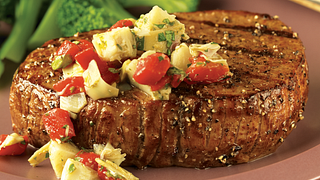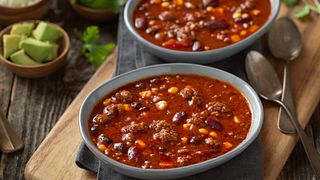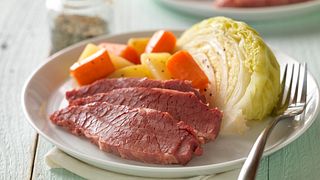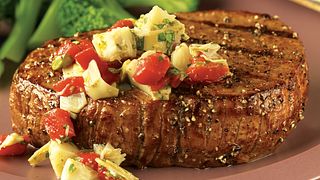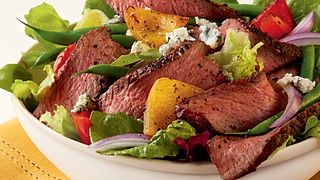So, what’s the deal with beef and heart health?
Autumn velez | February 19, 2020
As Americans think about eating for a healthy heart, many feel they’re forced to choose between a healthy diet and their love of beef. But, contrary to some misinformation on this topic, you can have both. The Mediterranean diet was just ranked the #1 Overall Diet in 2020 and the #2 Best Diet for Heart Health by U.S. News & World Report. And according to a report from the Dietary Guidelines Advisory Committee, many Mediterranean countries eat as much, or more, red meat than the U.S.
While coverage of this popular diet can include recommendations to limit red meat, research from a recent 2018 Purdue University study found that following a Mediterranean-style eating pattern that includes lean red meats, like lean beef, is just as effective in supporting a healthy heart as a Mediterranean-style diet that limits red meats. This finding is the latest in the growing body of scientific research demonstrating lean beef can be part of healthy eating patterns to support heart health. This research also means people have more flexibility and options when it comes to healthy eating. A cut of cooked fresh meat is considered lean when it contains less than 10 grams of fat, 4.5 grams or less of saturated fat and less than 95mg of cholesterol.
More key findings include:
- Following a Mediterranean-style eating pattern including 7 to 18 ounces of lean, fresh red meat per week was shown to improve cardiometabolic disease risk factor profiles.
- Including 18 ounces of lean, fresh red meat per week as part of a Mediterranean-style dietary pattern was found to be more effective in lowering LDL cholesterol than a similar eating pattern that only included 7 ounces of lean, fresh red meat. The average American consumes 18 ounces of red meat per week.
- Study participants following a Mediterranean-style dietary pattern including up to 18 ounces of lean, fresh red meat per week saw reductions in total cholesterol, LDL-cholesterol and blood pressure.
“The big takeaway from the growing body of evidence is that Americans who are trying to eat healthier and improve their heart health can still enjoy lean beef while improving cholesterol and blood pressure,” said Shalene McNeill, Ph.D., R.D. at the National Cattlemen’s Beef Association, a contractor to the Beef Checkoff. “By having this additional flexibility in their diets, Americans are more likely to stay the course and adopt healthy eating patterns long-term.”
Here are a few easy tips for integrating red meat into a Mediterranean-style eating pattern from the Beef Checkoff.
- Look for lean cuts of fresh beef — When it comes to lean cuts the options are endless. Some fan favorites include:
- Top sirloin
- Strip steak (top loin)
- Tenderloin steak
- 95% lean ground beef
- Pay attention to portion size — To reap the benefits of including lean beef in a Mediterranean-style diet, focus on eating up to 18 ounces of lean beef over the course of a week. For reference, a 3-ounce cooked serving of lean beef is about the size of a deck of cards.
- Aim for a complete plate — Mediterranean-style eating patterns are often characterized with high consumption of fruits, vegetables, whole grains, nuts/seeds and olive oil. Be sure to complement the lean red meat at the center of the plate with these Mediterranean musts.
About the Beef Checkoff
The Beef Checkoff Program was established as part of the 1985 Farm Bill. The checkoff assesses $1 per head on the sale of live domestic and imported cattle, in addition to a comparable assessment on imported beef and beef products. States may retain up to 50 cents on the dollar and forward the other 50 cents per head to the Cattlemen's Beef Promotion and Research Board, which administers the national checkoff program, subject to USDA approval.
About NCBA, a Contractor to the Beef Checkoff
The National Cattlemen’s Beef Association (NCBA) is a contractor to the Beef Checkoff Program. The Beef Checkoff Program is administered by the Cattlemen’s Beef Board, with oversight provided by the U.S. Department of Agriculture.
